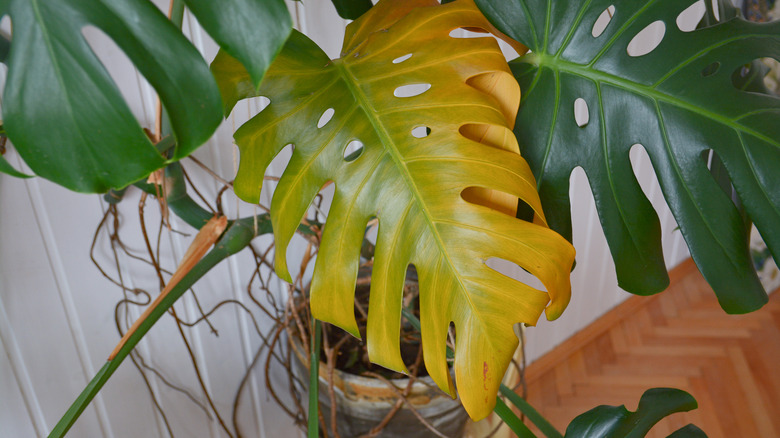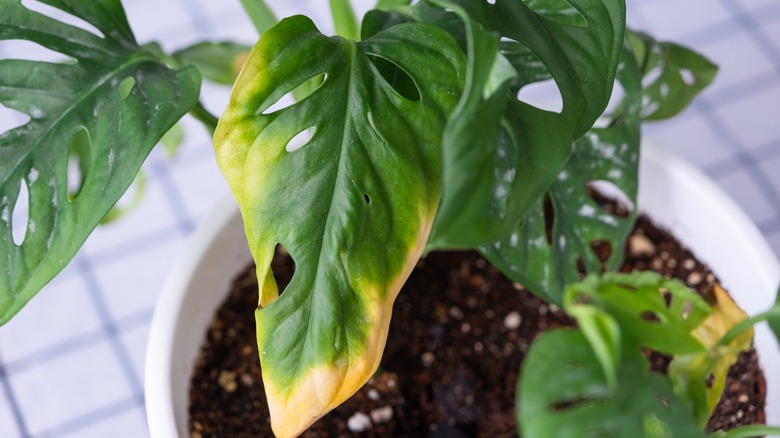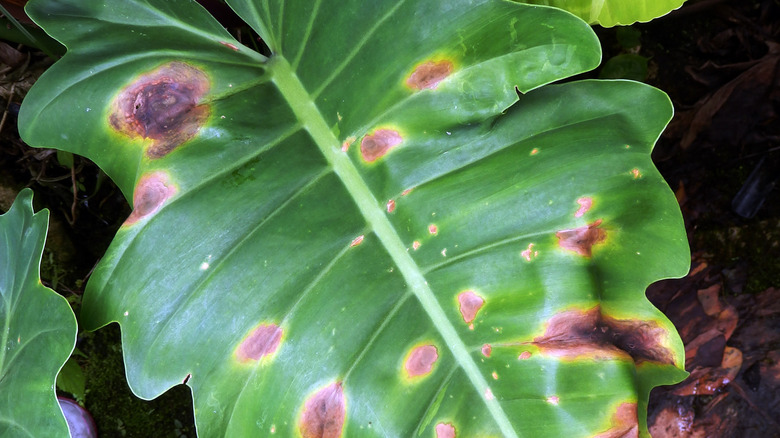Why Are The Leaves On My Philodendron Plant Turning Yellow?
Did you know that there are more than 450 varieties of philodendron worldwide, from upright to climbing plants? These tropical plants are a favorite in many homes due to how easy they are to grow and propagate. But that doesn't mean you won't come up against challenges.
No matter what variety you have, if you want to know why the leaves on your philodendron plant are turning yellow, it's probably down to one of the following most common reasons for yellowing leaves on any houseplant — underwatering, overwatering, root rot, nutrient deficiency, or pests and disease. Too much direct sunlight may also be the culprit when it comes to philodendron plants, as they prefer bright but indirect light. This helps to maintain optimal color on variegated leaves. Some philodendrons also have natural variegations that look like the leaves have turned yellow, like the Philodendron 'Brasil' or 'Lemon Lime.'
It can be stressful and upsetting when yellow leaves are a sign of ill health. But, try not to panic. It's tempting to act quickly in order to save the plant, but the proper assessment of the plant can prevent you from taking any action that could only make the problem worse. For example, it may be your instinct to water the plant, but you'll want to ensure that the soil is dry and that the plant actually needs watering first. Plus, you'll need to check the health of the roots.
Keep reading to find out more about why the leaves on philodendrons can turn yellow, and what you can do about it.
Why the leaves on philodendrons turn yellow
When a plant's leaves turn yellow it is called "chlorosis." This can just be part of the natural growth cycle, where old leaves turn yellow as they die off so that the plant can direct energy into growing stronger roots and new, young leaves higher up on the plant for more efficient photosynthesis. However, your plant could also be trying to communicate that something isn't right.
Look at where and how the leaf is yellowing and if there are any other signs that the plant is unwell, like stunted growth or withering leaves. This can give you clues as to the underlying cause. If you have young leaves that are turning yellow, then it's unlikely part of the natural growth cycle; but older leaves turning yellow can be a sign of nutrient deficiency — this could be an iron, manganese, magnesium, nitrogen, or potassium deficiency. A nutrient issue usually has to do with the quality of the soil you are using.
If the plant has healthy soil, strong roots, and access to the light it needs, and there are no signs of underwatering or overwatering, inspect the whole plant for signs of pests or disease that could be weakening the plant. It could have a virus infection or be under attack by an infestation of aphids, spider mites, or another bug that feeds off sap from the plant.
What to do if your philodendron's leaves turn yellow
Check all of the plant leaves and stems for patterns of chlorosis, like streaking, ring spots, or other unusual patterns that may signify a virus infection or disease. At the same time, check the undersides of leaves for insect eggs, or signs of pests feeding on the leaves — like small holes, brown patches, tiny black specks of waste, or webbing from spider mites. Some pests can be very difficult to spot unless you have a large infestation.
If there are no signs of pests or disease, it's time to check and see if the roots are healthy. You'll know immediately if there is any sign of root rot because affected roots will fall away easily when you gently massage out the soil. Cut off anything that has been infected, wash the rest of the root ball with water, and then repot in new soil. If you think the cause of the problem is a nutrient deficiency, you may choose to fertilize your plant instead of replacing the soil.
If the leaves have turned yellow as part of the natural growth process, then you won't be able to save them. They have come to the end of their usefulness and life, and the plant has decided it is time to shed them. This is nothing to worry about and you can just leave the plant alone. If you don't enjoy the sight of the yellow leaf, simply prune it off.


